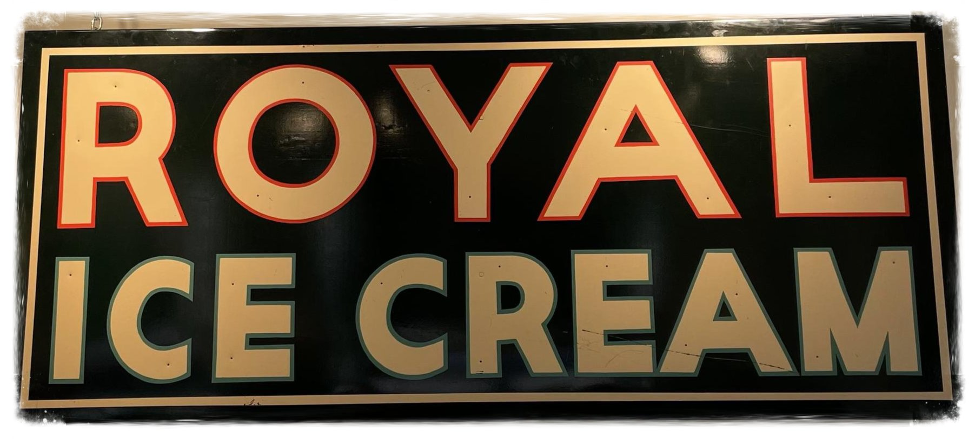Royal Ice Cream sign commemoration
Posted on June 17, 2021
The 1960 Greensboro sit-ins helped begin a national civil rights movement, but were not the first in North Carolina. A Durham protest in 1957 led to a court case testing the legality of segregation, cementing its place in history. The Royal Ice Cream Company may be gone, but one of its storefront signs is now on permanent display at the Museum of Durham History (500 W. Main St.), with a dedication to take place on the 64th anniversary of the sit-in, June 23rd from 6PM to 8PM.
The commemoration includes a public reception outside under the Museum’s gazebo, featuring remarks by historian Eddie Davis along with former N.C. State Senator Floyd McKissick and William A. Marsh, III whose fathers represented the protestors in court. Surviving participants Virginia Williams and Mary (Clyburn) Hooks will be on hand as very special guests of honor. Complimentary light refreshments and live music will also be part of the evening.
The Royal Ice Cream sign is a gift of MoDH board member Alice Sharpe in honor of her parents. This is one of two known Royal Ice Cream signs. The neon sign that hung at the entrance of the Royal Ice Cream Company now hangs at Provident 1898, located inside the North Carolina Mutual building at 411 W Chapel Hill St.
From the Durham Civil Rights Project, part of the North Carolina Collection of the Durham County Library:
On June 23, 1957, Rev. Douglas Moore of Asbury Temple Methodist Church led seven young, well-dressed African-American students into the segregated Royal Ice Cream Parlor. The group entered the “colored” entrance at the back of the restaurant and proceeded to the white section, where they sat down and ordered ice cream. The staff refused to serve them, and when they were told to leave by the manager, they responded by ordering another round of ice cream. The protesters were arrested and fined $10 plus court fees. Asked later about the incident by a reporter, Moore said, “We just decided we wanted to cool off, to get some ice cream or milkshakes.”
Moore sought the help of Durham lawyer Floyd McKissick, a prominent civil rights activist. The case was upheld by the North Carolina Supreme Court, and the United States Supreme Court declined to hear it on the grounds that the protesters’ rights had not been violated, since laws against their actions were on the books.
The Royal Ice Cream sit-in not only provoked controversy in the white community; it created a huge uproar among black citizens, many of whose members viewed the protesters not as freedom fighters but as troublemakers led astray by a radical young minister and an outsider. Although the sit-in did not get a lot of support, it did set the stage for future protests. It is documented that the Greensboro Woolworth’s protesters, who ignited lunch counter sit-ins throughout the South, knew about and were perhaps inspired by the Royal Ice Cream sit-in. By the time the 1960 sit-ins reached Durham, the views of the town’s black citizens had changed, with most being in favor of the protests.

